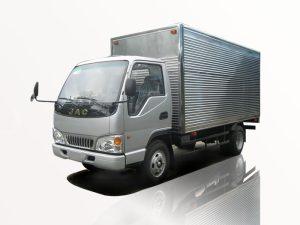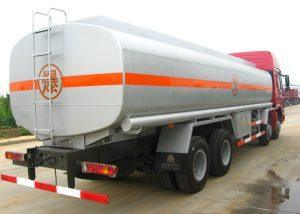Monday to Saturday - 8:00 -17:30
What Country is VIN? A Comprehensive Guide to Vehicle Identification Numbers
Understanding the Vehicle Identification Number (VIN) is essential for anyone involved in buying, selling, or owning a vehicle. This article delves into what a VIN is, its importance, how to decode it, and its origin in specific countries. We will explore not only the legal aspects but also practical applications of VINs that can influence vehicle ownership decisions.
What is a Vehicle Identification Number (VIN)?
A Vehicle Identification Number (VIN) is a unique code used by the automotive industry to identify individual motor vehicles. This 17-character string is composed of both digits and letters, providing vital information about the vehicle such as its make, model, year, and place of manufacture.
Purpose of VIN
The primary purpose of a VIN is to offer a robust method of identifying vehicles uniquely. Here are some critical reasons why VINs are so important:
- Identification: VINs help in identifying vehicles and their histories.
- Registration: VINs are often required for vehicle registration with government authorities.
- Insurance: Insurance companies often use VINs to assess risk and determine rates.
- Recalls: VINs allow manufacturers to identify which vehicles may be affected by recalls.
The Anatomy of a VIN
A VIN can be broken down into several sections that provide specific information:
| Position | Characters | Description |
|---|---|---|
| 1-3 | WMI | World Manufacturer Identifier |
| 4-8 | VDS | Vehicle Descriptor Section |
| 9 | Check Digit | Used to verify the VIN for accuracy |
| 10 | Model Year | Indicates the vehicle’s model year |
| 11 | Plant Code | Identifies the plant where the vehicle was assembled |
| 12-17 | Serial Number | Unique number that differentiates each vehicle |
Where is VIN Found? Locations and Methods
The VIN can be found in several locations on a vehicle. Knowing where to look can help when trying to identify a vehicle’s specifications or history.
Common Locations for VIN
- Dashboard: Often located on the driver’s side of the dashboard, visible through the windshield.
- Driver’s Side Door Frame: Generally seen on a sticker or metal plate when the door is open.
- Engine Bay: Sometimes stamped or affixed to components in the engine compartment.
- Vehicle Registration Documents: VINs are also prominently displayed on important documents such as registration and insurance filings.
The Global Standard for VINs
ISO Standard for VIN
The VIN format was standardized by the International Organization for Standardization (ISO) under the ISO 3779 standard. This standard ensures that vehicle manufacturers worldwide use a consistent VIN structure, allowing effective communication and understanding among different countries and manufacturers.
VIN Format Across Different Countries
VINs may conform to the same structure globally, but there are nuances in how they are used in different countries. Let’s explore a few countries:
United States
In the United States, VINs are used extensively for vehicle registration, tracking, and recalls. They follow the ISO 3779 standard, helping ensure uniformity across states.
Canada
Similar to the U.S., Canada has aligned its VIN requirements with ISO standards, making it straightforward for manufacturers to comply and ensuring that Canadians can verify their vehicle’s history easily.
European Union
European countries also follow the VIN standards, although regulations may vary by member state. The European Union emphasizes traceability and eco-friendliness, encouraging manufacturers to maintain detailed records of vehicle production and emissions.
Australia
In Australia, VINs are also crucial for vehicle registration and are regulated by respective state authorities. Compliance with international standards facilitates the import of vehicles.
How to Decode a VIN
Decoding a VIN can provide you with important information about a vehicle. Here’s a step-by-step guide:
Step 1: Identify the WMI
The first three characters indicate the manufacturer and country of origin. For example, “1HG” as a WMI signifies a Honda manufactured in the USA.
Step 2: Analyze the VDS
The next five characters (4-8) provide details on the vehicle type, model, body style, and engine type. For example, “CM826” might tell you it’s a sedan with a specific engine type.
Step 3: Examine the Model Year
The tenth character reveals the vehicle’s model year. The letter ‘A’ represents 1980, ‘B’ for 1981, and so forth, rotating every 30 years. Year codes are crucial for determining the vehicle’s age.
Step 4: Check the Serial Number
The final six characters (12-17) are the unique serial number. This number differentiates one vehicle from another, even if they are of the same make and model.
The Importance of VIN Check Services
Many online services allow users to check the history of a vehicle using its VIN.
These checks typically include:
- Accident History: Were there any reported accidents?
- Title Status: Is the title clean, salvaged, or rebuilt?
- Recall Information: Has the vehicle been recalled for any issues?
- Mileage Verification: Has the vehicle’s mileage been tampered with?
Using VIN check services is a critical step in buying a used car, providing peace of mind that the vehicle’s history is clear.
Practical Tips for VIN Usage
Buying a Used Vehicle
When purchasing a used vehicle, always perform a VIN check. This can help uncover any red flags that might not be obvious during a visual inspection or a test drive. Pay particular attention to any discrepancies in the vehicle’s history report.
Registration and Insurance
Be sure that the VIN you provide for insurance and registration matches the one found on your vehicle. This consistency is crucial for avoiding legal complications and ensures that all documentation is in order.
Keeping Records
Maintain records of your VIN in case you need to file a police report for theft or for registration purposes. Keeping a copy in a secure place can be handy when needed.
Common Questions about VINs
1. Can I find my VIN online?
Yes, many manufacturers and vehicle history report services allow you to look up your VIN based on other vehicle details, such as the make and model.
2. What should I do if my VIN is not found?
If your VIN is not found in vehicle history databases, double-check that you have entered it correctly. If accurate and still not found, it may indicate that the vehicle is very new or has not been registered properly.
3. Is the VIN unique for every vehicle?
Yes, every vehicle has a unique VIN that serves as its fingerprint. No two vehicles should have the same VIN.
4. How often is a VIN used in vehicle transactions?
A VIN is used in almost every transaction involving a vehicle, especially in sales, registrations, and insurance processes.
5. Can the VIN change?
Generally, a VIN should never change. However, in rare cases (such as major modifications or frame alterations), a new VIN may be issued after inspection by a relevant authority.
6. Why is the VIN critical in case of theft?
The VIN is critical for recovering stolen vehicles and filing reports with law enforcement. It helps in tracking the vehicle and confirming ownership.









